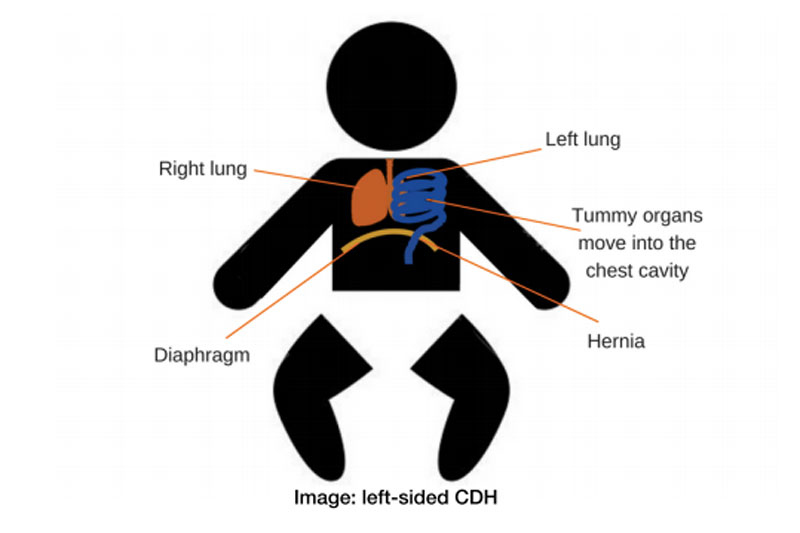Congenital Diaphragmatic Hernia (CDH) is a life-threatening condition caused by a baby’s diaphragm not forming properly during pregnancy. The diaphragm is the main muscle that helps us breathe, and also separates the chest cavity from the abdominal cavity. The hernia (or hole) can occur on either the left or the right side of the diaphragm, or very rarely, can be on both sides (bilateral). In most cases (about 80%) the hernia is on the left side.
Because of the hole in the diaphragm, abdominal organs such as the stomach, intestine, liver and spleen, can move through the hole into the chest cavity where the lungs and heart are. This means the lungs have insufficient space to grow normally and are therefore smaller than they should be. A smaller lung size can also mean that the lungs cannot grow as many air sacs (alveoli). Babies with CDH are usually born with less lung sacs and tissue than a baby that does not have this condition. The lung on the side of the hole is always the smallest lung. The lung on the other side is also usually smaller than normal because the heart is pushed across and restricts growth. For example, if a baby’s hernia is on the left side, the left lung will be much smaller, but this may in turn push the heart to the right, therefore affecting the right lung’s growth as well.






